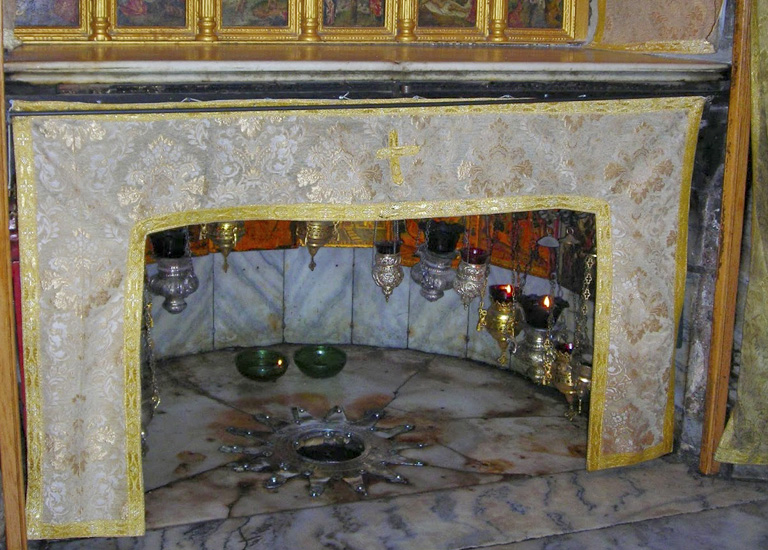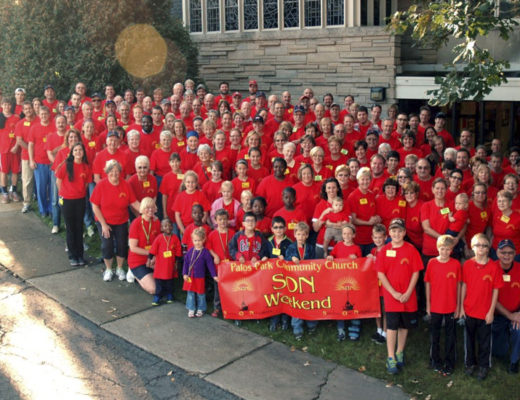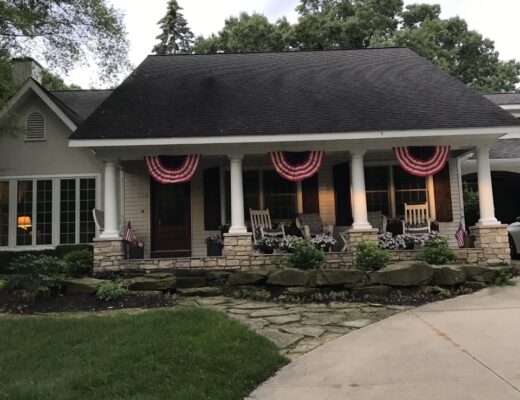The first time I visited Bethlehem more than 25 years ago, I expected to feel a sense of the beauty and simplicity of the much-loved Christmas story: a crude stable, the holy family, shepherds, wise men, and the Son of God in the manger. I was sadly disappointed. The traditional site of Jesus’ birth in Bethlehem is inside the Church of the Nativity—a truly ancient church built in 565 AD. It has survived enemy invasions, the Crusaders, restorations, renovations, a fire and an earthquake, but it looks like . . . well, a church. A beautifully decorated and ornamented church, with all the sacred clutter that has accumulated over the centuries, but it bore no resemblance to my image of what Jesus’ birthplace was like.
But wait—the real site was down a set of stairs and inside a natural cave that has been venerated as the place of His birth since 160 AD. But even this simple cave was so gilded and bedecked with artwork and tapestries and lamps and incense burners that I still couldn’t get a sense of what it might have looked like on that first holy night. In the center of the floor was a silver-encrusted star with a hole in the middle. By putting my hand inside, I could touch the place where Jesus was born more than 2,000 years ago. I tried it, but I left Bethlehem feeling empty, unable to make the sacred connection I had so longed for.
And isn’t that how so many of our Christmases end up feeling? In spite of all the tinsel and glitter and sparkle, all the money we spend and the stress we endure as we try to create the perfect Hallmark Christmas, we’re often left with the same let-down feeling I had inside that church in Bethlehem. We’ve lost the simple beauty of the story, that precious connection with God that is the true miracle of Bethlehem.
The year after visiting Bethlehem, I began looking for ways to recapture the simplicity of Christ’s incarnation. Santa Claus has never been invited to our family Christmases, and we’ve always celebrated it as Jesus’ birthday, exchanging presents because God gave us the gift of His Son. But year after year, the clutter and glitz had draped themselves over our celebrations, just like the religious trappings that have collected inside the Church of the Nativity over the centuries. That year, I purchased a nice but inexpensive manger set. I wanted something that wasn’t a toy, but that my children could handle and touch. We placed it at their level and at the center of our holiday, and began the simple tradition of gathering together as a family to fill the empty stable while my husband read the story from the Bible. Our children divided all the people and sheep and camels among themselves and when we got to their part in the Bible story, they added their figures to the stable. 
This simple tradition has become so beloved by all of us that we still do it the same way every year, even though our children are now adults. Our two married children couldn’t wait to share the tradition with their spouses, generously dividing their sheep and wise men among the newest members of our family. One year, our daughter was living overseas and couldn’t make it home for the holiday but we still held our family tradition while she participated via Skype and a web camera.
And it’s always in those moments, with this simple stable and inexpensive plaster figures and my precious loved ones gathered around me that I feel the holy wonder of Christmas once again—Emmanuel, God with us!



